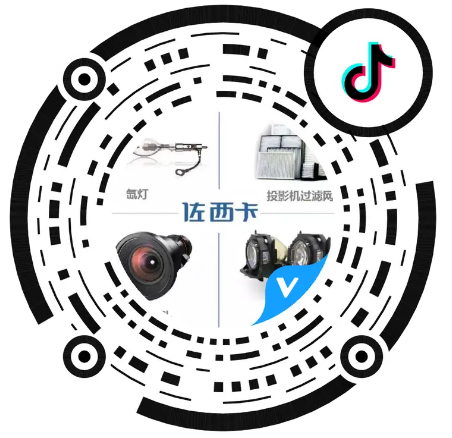BenQ CinePro HT9060 4K LED Projector Review
2019-10-12
BENQ HT9060 CONs
OUR TAKE ON THE BENQ HT9060
BenQ's flagship home theater projector brings some exciting technology with its long-life LED light engine and delivers crisp, color-accurate pictures through its superb lens, but its high cost and limited contrast make it a tough sell. 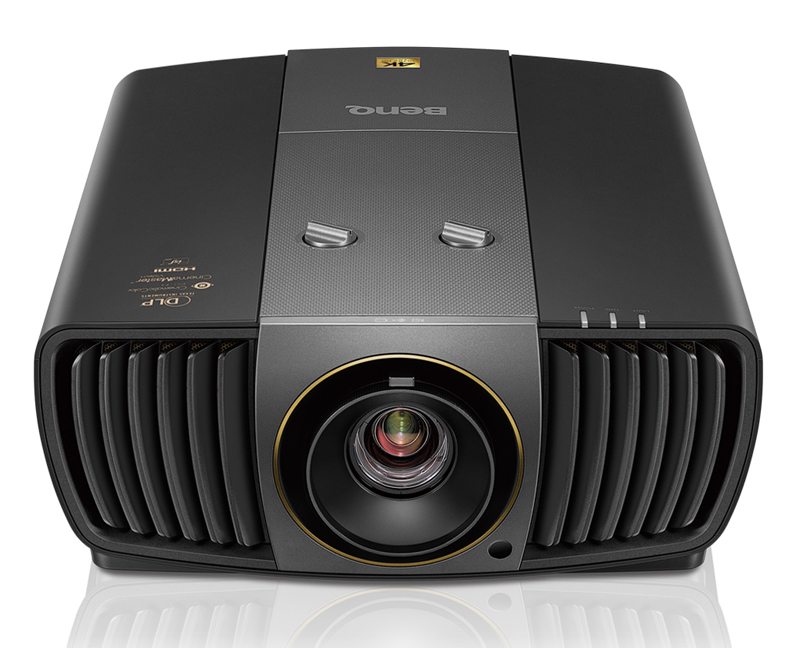
The last few years have seen an incredible number of technological advancements and image quality improvements appear in projectors destined for home theaters and other high-end display scenarios. The BenQ CinePro HT9060 ($9,999), like the HT9050 from the year 2017 that it replaces, features several of these advancements, including full 4K UHD (3840 x 2160 pixel) resolution from a Texas Instrument 0.67-inch DLP chip with XPR pixel-shifting technology, the ability to reproduce up to 98% of the DCI-P3 wide gamut color space, and— perhaps most notably—a long-lasting (20,000 hour) Philips HLD ColorSpark LED light engine.
Compared with its predecessor, the HT9060 now sports both HDR10 and HLG support, along with BenQ's recently introduced HDR-PRO technology, which describes a package of advancements and tone-map improvements that BenQ applies in its new HDR projectors. The HT9060 also adds full HD 3D compatibility (1980 x 1020 pixels per right and left channel). Otherwise, the HT9060 and HT9050 are physically identical, with both featuring the same tack-sharp, 14-element, 1.5x zoom lens with both vertical and horizontal shift; an advanced remote control; dual HDMI inputs; a heavy and well-built chassis; a fairly quiet fan; support for an optional anamorphic lens for maintaining constant image height on a wide screen with 2.4:1 ratio movie content; and ISF Day and Night picture modes.
At this writing, HDR10/HLG capabilities and wide color gamut coverage can be found in a variety of 4K UHD and WUXGA projectors costing one-third to even two-thirds as much as the HT9060. Nearly all of those are lamp-based, however, so that leaves a crucial question for potential buyers of the HT9060: Is the combined value of its long-life ColorSpark HLD LED light source, lumen output, pro-level lens, 3D support, and HDR/HLG performance worth its premium price over these lamp-based models? Or might one of the growing crop of 4K UHD laser projectors be a better choice?
BenQ CinePro HT9060 Features
Like its predecessor, the new HT9060 is a fairly large projector, and at 40.8 lbs is about 7 pounds heavier than its current lamp-based counterpart, the Benq HT8060 ($8,999). As noted, the HT9060 chassis is extremely solid and well built, and has nearly all of the video and PC inputs that you'd expect from a pro-level projector in this class—except that only one of its HDMI ports is version 2.0 with HDCP 2.2 copyright management as required for most 4K UHD content. Its other HDMI input is version HDMI 1.4a with HDCP 1.4, and accepts signals only up to 1080p/60 Hz.
The high-quality, 14-element, 1.5X zoom lens is one of the HT9060's best features and includes several low-dispersion, glass elements that minimize lens distortions. Manual lens focus and zoom rings are located on the outer rings of the lens, while lens shift control knobs are located on top of the projector. In combination with the ColorSpark HLD LED engine's low entendue (which indicates its tight dispersion of light), this well-designed lens helps to produce a super-sharp image from edge to edge, with a very high 97% tested uniformity (no hotspots). While I didn't detect any of the color aberrations and distortions often found in cheaper lenses, I was a bit surprised that a projector in this price range lacked electronic focus or zoom controls, and offered no lens memory settings. Motorized features make it much easier to set up the projector and attain sharp focus by allowing that adjustment to be made close to the screen, while lens memories allow the option of using the zoom method to maintain constant image height on a 2.4:1 screen. As mentioned, BenQ does provide picture modes to accommodate an optional Panamorph Paladin anamorphic lens. This achieves the same objective, though it's a costly option that will set you back almost as much as the projector.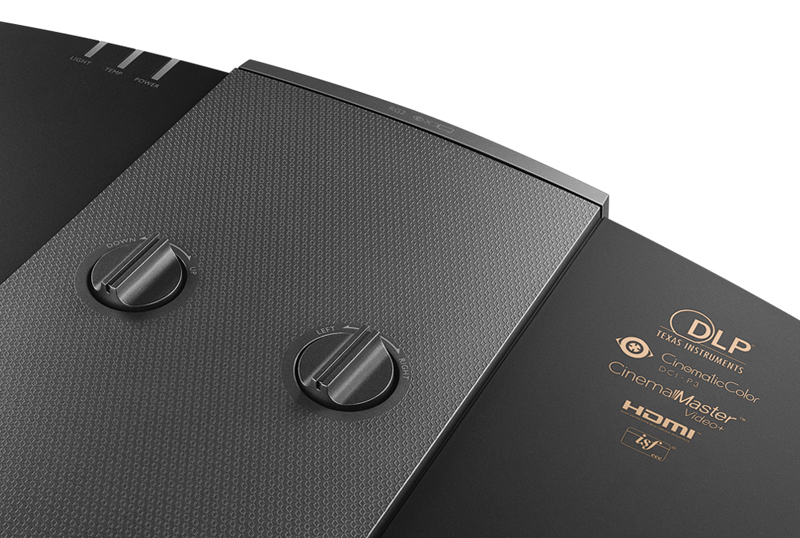
The zoom on the HT9060 allows it to throw a 100-inch diagonal, 16:9 image (for example) from approximately 10 to 15 feet, and features a generous +/-65% vertical and +/-27% horizontal lens shift that allows for some positioning flexibility. However, as with some other projectors, using the horizontal lens shift reduces the range of vertical shift—something to be wary of if you need to mount the projector off-axis from the screen. There's no digital keystone correction, but it's generally recommended to avoid that anyway with a projector of this caliber to retain the best image quality. You can use ProjectorCentral's BenQ HT9060 projection calculator to determine the range of throw distances for your intended screen size.
Along with its superb lens, the HT9060's most distinctive feature is its Philips ColorSpark HLD LED light engine. When it was first shown in a prototype BenQ projector at the 2017 ISE Trade Show in Amsterdam, the ColorSpark light engine held great promise for projection enthusiasts. First and foremost was its long-life (20,000 hour) "bulb-free" lifespan at a promised price point that was to be far below laser-based models offering similar longevity. But it also promised to solve many of the optical entendue and speckle issues that plagued early laser-light engines.
Inside the ColorSpark HLD (High Lumens Density) engine are three banks of LEDs: one containing red LEDs, one containing blue LEDs, and one containing blue LEDs plus phosphors in an unusual cannon-style light tunnel. Those phosphors emit 560-nanometer green light when struck by the blue light from the LEDs, and that light is optically channeled to an output window that's close in size to the 4.1-megapixel, micro-mirror DLP chip used by the projector.
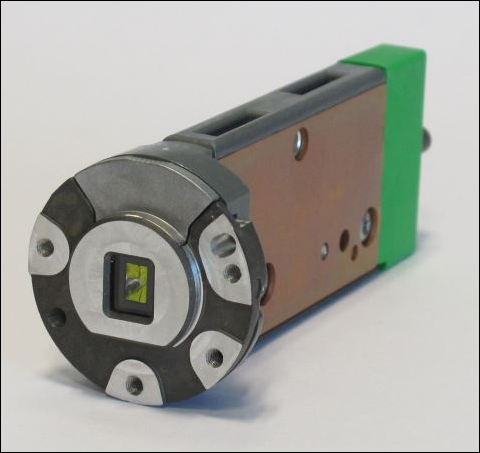
It is the brightness of this green primary (in combination with the blue and red LED output) that allows the ColorSpark engine to greatly exceed the light output of typical LED engines. In the HT9060, the white light formed by combining the R, G, and B lights from all three banks is then bounced off the DLP chip's mirrors, and passed through a spinning color filter wheel to form a full color image. This approach is similar to how most two-color (red and blue) laser-phosphor light engines operate in single-chip DLP projectors.
The inclusion of a sequential color wheel in this and some other LED light engines may come as a surprise. There was early speculation that the HLD LED engine might eliminate the need for a color wheel and therefore eliminate the rainbow artifacts found in lamp-based, single-chip DLP projectors. That effect, for those who are sensitive to it, has been reduced over the years in single-chip DLP models mainly by using higher-speed (2x to 3x) color wheels. But removing the color wheel altogether was never the goal of the HLD LED engine, which was designed primarily to provide a longer-lasting light source that also produced a better color spectrum than the typical lamp. That wider color gamut may have reduced the need for some of the secondary colors typically found in color wheels, including cyan and magenta. However, Benq's initial published specs for the HT9060 showed that it includes a 1x speed (120 Hz) color wheel, and I saw rainbows clearly in test videos prone to reveal them. I further found that these increased slightly in the projector's HDR mode. Ultimately, our usual advice about rainbows applies: If you're sensitive to them or don't know if you are, work with a retailer/integrator who will work with you in the event you find them bothersome.
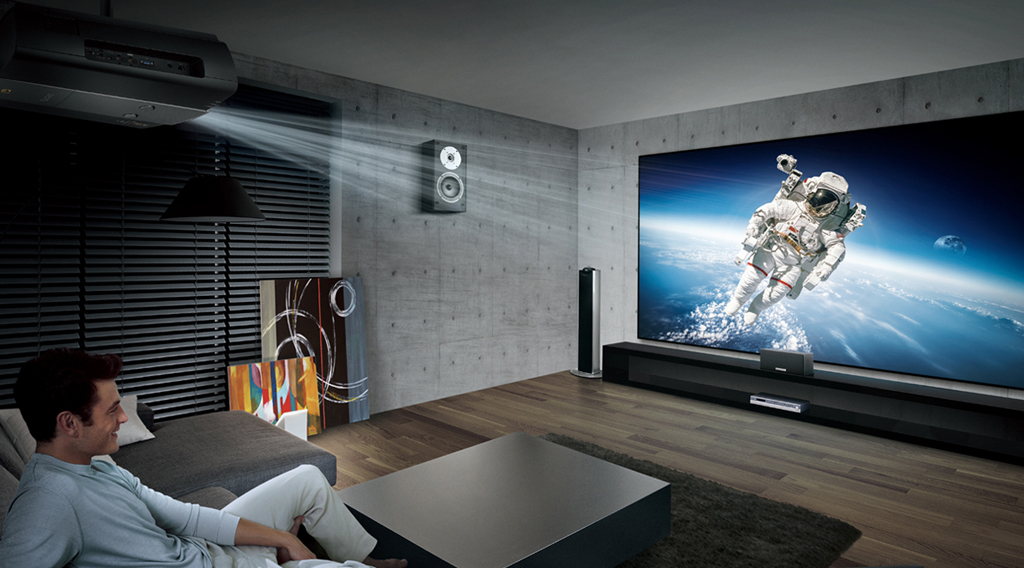
Here's a list of the BenQ HT9060's key specs and features:
- UHD resolution (3840 x 2160 pixels) achieved from a .67 inch Texas Instruments DLP chip with native 4.1 megapixel resolution and 2-stage, XPR pixel-shifting
- 2,200 rated ANSI lumens brightness
- 50,000:1 rated contrast ratio (full on/full off)
- 10-bit color processing
- Philips ColorSpark HLD LED light engine with 20,000-hour life span.
- Specified reproduction of 98% of the DCI-P3 wide color gamut
- Premium 6-group, 14-element glass lens with 1.5x manual zoom
- Vertical (+/-65%) and horizontal (+/-27%) lens shift
- Dual HDMI inputs (one HDMI 2.0/HDCP 2.2; one HDMI 1.4a/HDCP 1.4)
- Four preset picture modes: Bright, Vivid, Cinema, and Silence; plus two customizable User modes
- HDR10 and HLG compatibility (auto or manually activated)
- Three lamp modes: Normal, SmartECO, and ECO.
- Advanced remote control with dedicated quick-access control buttons to key functions
- Full HD 3D support
- ISF-certified Day/Night modes
- Supports optional anamorphic conversion lens
- 3-year warranty
by Michael J. McNamara on October 3, 2019 | ProjectorCentral.com






